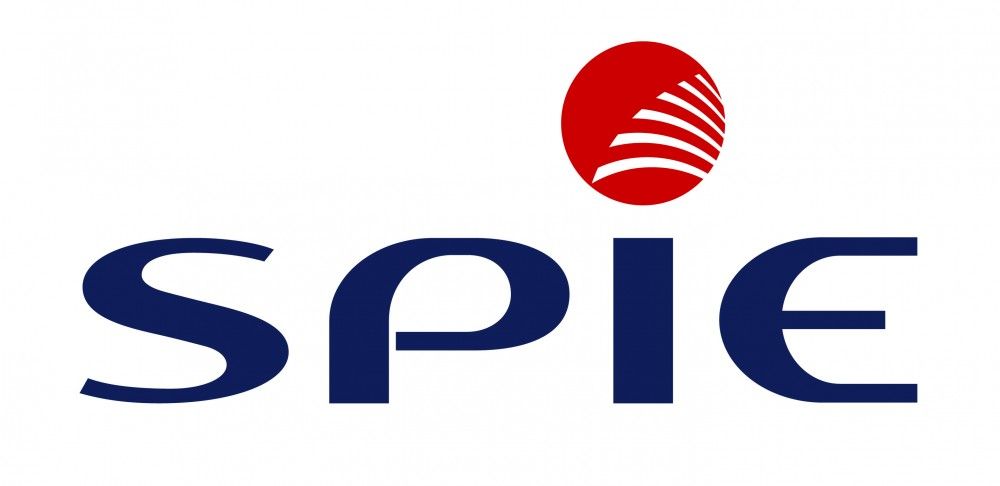Cursusbeschrijving
In deze vierdaagse cursus onder leiding van een docent leren deelnemers om voice- en online-diensten voor bedrijven te ontwerpen en te configureren in Microsoft Lync Server 2013. Deze cursus rust deelnemers uit met de kennis en vaardigheden voor het configureren en beheren van een Lync Server 2013 op locatie, in de cloud of in een gemengde omgeving. Daarnaast doen IT- of telecomadviseurs de benodigde vaardigheden op voor het leveren van een voice-systeem voor bedrijven op basis van Lync. In deze cursus leert u hoe u Lync Server 2013 kunt configureren en krijgt u richtlijnen, best practices en overwegingen mee voor het optimaliseren van uw Lync-server.
{tab=Doelgroep}
Deze cursus is bedoeld voor professionals op het gebied van IT- en telecomconsulting die unified communications-systemen ontwerpen, plannen, implementeren en beheren, waarbij de nadruk ligt op VOIP- en online-diensten binnen bedrijven. De deelnemer moet in staat zijn om bedrijfseisen om te zetten in een technische architectuur en een technisch ontwerp voor een UC-systeem.
{tab=Voorkennis}
Voorkennis voor deze cursus is de M20336 Core Solutions of Microsoft Lync Server 2013
en:
- Minimum of two years of experience with Microsoft Lync technologies or similar telephony systems.
- Familiarity with supported migration scenarios.
- Experience deploying Lync Server solutions for the following scenarios:
- End users
- Endpoint devices
- Audio/video and Web conferences
- Familiarity with security and high availability concepts.
- Experience with monitoring and troubleshooting Lync Server.
- Understanding of Active Directory Domain Services (AD DS).
- Networking experience
- Knowledge of PowerShell
- {tab=Certificering}
Na het volgen van deze cursus ben u voorbereid om deel te nemen aan het examen 70-337.
{tab=Overige informatie}
This course will be delivered with digital courseware. In order to have the best learning experience you are asked to bring your own second screen to view the courseware. A second screen includes: tablets and laptops.
{/tabs} {slider=Cursusinhoud}
Module 1: Voice Architecture
This module introduce Enterprise Voice features of Lync Server 2013 and discusses all components required to for implementation. A high level architectural design is provided and all relevant components such as mediation servers, gateways, SIP trunks, and PBX are discussed. This module provides students with the technical foundation to plan and deploy the Enterprise Voice workload.
- Voice Features of Lync Server 2013
- Architecture and Server Roles
- Site Topologies
After completing this module, students will be able to:
- Describe the Enterprise Voice features and capabilities of Lync Server 2013.
- Explain Enterprise Voice architecture and server roles of Lync Server 2013.
- Define site topologies for an Enterprise Voice deployment.
Module 2: Configuring Basic Enterprise Voice Functionality
This module discuss configuration items relevant to Enterprise Voice. At the end of the module, students will have an in-depth understanding of configuration items such as trunks, routes, voice policies, and so on. Students will be able to configure Enterprise voice, implement routing and normalization and enable users for Enterprise Voice functionality.
- Introduction to Lync Voice Routing
- Configuring Enterprise Voice
- Defining Voice Policies
- Assigning DID Numbers
- How to Design a Dial Plan
Lab : Preparing for Enterprise Voice
- Analyzing the Existing Voice Infrastructure
- Configuring the Topology for Enterprise Voice
- Configuring Dial Plans and Normalization Rules
- Configuring Voice Routes
- Configuring Voice Policies and PSTN Usages
- Configuring Number Manipulation on Trunks
- Enabling Users for Enterprise Voice
- Verifying and Testing Normalization Rules
- Testing Trunk Routing and Translation Rules.
- Configuring Inter-Trunk Routing
After completing this module, students will be able to:
- Set up and configure Enterprise Voice functionality
- Design and implement call routing for Lync Server 2013
- Implement number manipulation
- Control Enterprise Voice features for users
Module 3: Designing Exchange Server 2013 Unified Messaging with Lync Server 2013
This module discusses the process for integrating Exchange Server 2013 Unified Messaging (UM) with Lync Server 2013. Students also learn about UM dial plan requirements and how to create and configure a UM dial plan. Students learn how to enable a user for UM integration with Lync Server 2013.
- Overview of Exchange 2013 Unified Messaging
- Integrating Unified Messaging with Lync Server 2013
Lab : Designing Exchange Server 2013 Unified Messaging with Lync Server 2013
- Configuring Exchange Server 2013 UM to work with Lync Server 2013 Enterprise Voice
- Configuring Lync Server 2013 Interoperability with Exchange Server 2013 Unified Messaging
- Testing and Verifying Integration
After completing this module, students will be able to:
- Understand how Lync Server 2013 integrates with Exchange Server 2013 UM.
- Plan for Exchange Server UM requirements.
- Configure Lync Server 2013 to work with Exchange Server 2013 UM.
Module 4: Voice Applications
This module discusses specific Enterprise Voice applications such as call parking, unassigned numbers, public switched telephone network (PSTN) conferencing, and Response Groups – and builds on the basic Enterprise Voice deployment scenario introduced earlier in the course.
- Call Park Service
- Managing Calls to Unassigned Numbers
- PSTN Conferencing
- Overview of Response Group Services
- Implementing Response Group Services
Lab : Implementing Enterprise Voice Applications
- Configuring Call Park
- Configuring the Unassigned Number Feature
- Verifying Call Park Service and Unassigned Number Feature
- Configuring Agent Groups and Queues
- Configuring Workflows
- Configuring the Response Group Service Behavior
- Configuring Dial-In Conferencing
- Verifying Dial-In Access Configuration
After completing this module, students will be able to:
- Describe the purpose of Call Park.
- Explain the Unassigned Number feature.
- Describe PSTN conferencing.
- Describe Response Group Services.
- Explain Response Group Services components.
Module 5: Configuring and Deploying Emergency Calling
This module covers the Location Information Server (LIS) and how to implement Emergency dialing and Enhanced 911 (E9-1-1) where appropriate. The module discusses the implementation and configuration of Emergency Services for a Lync infrastructure and explores various configuration aspects of Emergency Services, such as location services, call routing and E9-1-1.
- Introducing Location Information Server
- Overview of Setup and Call Flow
- Designing Location Policies
- Implementing LIS
- Address Discovery
- User Experience
Lab : Configuring the Lync Server 2013 Location Information Service for Emergency Calling and E9-1-1
- Creating Emergency Routes and PSTN Usages
- Configuring Number Manipulation on Trunks for Emergency Numbers
- Defining LIS Locations
- Experiencing LIS Features
- Creating E9-1-1 Gateway Configuration
- Verifying Emergency Calling through the E9-1-1 Gateway
- Creating an Alternate Local Path for Emergency Calls
After completing this module, students will be able to:
- Describe Location Information Server (LIS).
- Describe how to set up and implement E9-1-1.
- Design Location policies for an E9-1-1 implementation.
- Configure LIS.
- Describe how location discovery works.
- Describe the process when a user makes an emergency call.
Module 6: PSTN Integration
This module discusses how to connect Microsoft Lync Server 2013 to a public switched telephone network (PSTN) using an existing Public Branch Exchange (PBX), gateway or (Internet Service Provider (ISP). Connection to the PSTN allows enterprise users to make calls to and receive calls from outside external numbers using the same Lync client used for internal calls. Later lessons will cover Lync 2013 features to improve managing and interacting with external users connected through the PSTN.
- Connecting to the PSTN
- Connecting to the Existing PBX
- M:N Interworking Routing
- Call Routing Reliability
After completing this module, students will be able to:
- Connect the Lync infrastructure to the PSTN.
- Describe the different interoperability options.
- Configure interworking networking.
- Describe call routing reliability in Lync Server 2013.
Module 7: Lync Server 2013 and Networking
This module focuses on network requirements planning, including Quality of Service (QoS), capacity, conferencing traffic, Edge placement, and bandwidth management. The module also discusses how to plan and deploy Call Admission Control (CAC). Students will learn about Lync networking dependencies, design guidelines, and best practices. The module also provides background information on CAC and QoS, and design and configuration information. At the end of the module, students will understand the networking requirements for Lync Enterprise Voice, and know how to successfully design, implement and configure Lync for both QoS and CAC.
- Planning for Media Requirements
- Call Admission Control
- Planning for Call Admission Control
- Media Bypass
Lab : Implementing Call Admission Control
- Configuring CAC Components
- Verifying Bandwidth Policy Application
After completing this module, students will be able to:
- Create network regions
- Create bandwidth policy profiles
- Create and associate network sites
- Create network region links
- Define routes between network regions
- Create network inter-site policies
- Enable Call Admission Control
- Enable Media Bypass
- Enable Lync Server 2013 for QoS
Module 8: Phones and Devices
This module discusses Lync phones and devices. At the end of the module the student will be able to deploy and configure Lync phones and devices.
- Introduction to Phones and Devices
- Device Deployment
- Lync Server 2013 Phone Management
- Analog Device Support
After completing this module, students will be able to:
- Understand the differences between the different types of Lync phones.
- Setup, configure and manage Lync Phone devices.
- Deploy and support analogue phone devices.
Module 9: Online Configuration and Migration
This module introduces Lync Online and hybrid scenarios as well as explaining how to migrate users to Office 365. The different Lync online deployment architectures and the differences in feature set and functionality are discussed.
- Introduction to Office 365 Architecture
- Hybrid Scenarios
- Lync Online Policies
- Integrating Lync Online and Lync On-Premise
- Configuring Edge for Lync Online
- User Migration between Lync On-Premises and Lync Online
Lab : Configuring a Hybrid Deployment of Lync Server 2013
- Setting up Lync Hybrid Deployment with Lync Online
- Preparing Online Services
- Installing the Directory Synchronization Tool
- Verifying the Hybrid Lync Deployment
After completing this module, students will be able to:
- Describe Lync Online topology and architecture.
- Describe the different scenarios that make up a Lync hybrid deployment.
- Describe Lync policies and service plan offerings for Lync Online.
- Deploy and configure Active Directory Federation Services (ADFS) and DirSync.
- Set up federation with Office 365.
- Migrate users between Lync On-Premises and Lync Online.
Module 10: Hybrid Voice and Unified Messaging
This module discusses integration of Lync Online with Lync on-premises for the purpose of leveraging PSTN voice infrastructure located on-premise for the Lync Online users. This is known as hybrid voice deployment. Students will learn how to setup hybrid voice for Office 365 users as well as users that have been migrated to Lync Online from a Lync on-premises deployment. This module also covers integration of Exchange Online UM messaging with both Lync Online and Lync on-premises in a hybrid scenario.
- Configuring Online Users for Enterprise Voice
- Configuring the Lync Edge server to support Exchange UM Online
- Enabling Users for Exchange UM Online
Lab : Configuring Enterprise Voice for Both Online and On-Premise Users
- Configuring the Lync On-Premises Deployment to Work with Lync Online
- Testing Voice Calls between Lync Online and On-Premises Deployment
After completing this module, students will be able to:
- Configure online users for hybrid voice scenarios.
- Create a hosted Exchange UM dial plan.
- Create hosted Exchange UM auto attendants.
- Enable Lync users for Exchange UM online.
Module 11: Monitoring
This module explains the requirements for quality of experience (QoE) monitoring. students learn to interpret and use QoE reports to better manage and deliver the Lync Server 2013 user experience.
- Voice Quality Concepts
- Exploring Lync Monitoring Server Components
- Exploring Lync Monitoring Server Reports
- RTP and RTCP Collected Information
Lab : Exploring Monitoring Server Reports
- Reviewing Per-to-Peer Session Detail Reports
- Reviewing Call Detail Reports
After completing this module, students will be able to:
- Describe the requirements for installing Lync Monitoring server.
- Identify the different built-in reports.
- Describe each matrix available in the reports.
Module 12: Voice Resiliency
This module explains the voice resiliency features of Lync Server 2013. The module explores multiple failure scenarios, such as central site, branch, and WAN failover.
- Voice Resiliency in Lync Server 2013
- Lync Pool Resilience
- Branch Office Resilience
Lab : Implementing Voice Resiliency in Lync Server 2013
- Configuring a Survivable Branch Server
- Testing and Verifying Branch Office Resiliency with a WAN
- Testing and Verifying Branch Office Resiliency with a Pool
- Testing and Verifying Branch Office Resiliency with an SBA
- Testing and Verifying Central Site Voice Resiliency
After completing this module, students will be able to:
- Describe the resiliency challenges related to Lync Enterprise Voice.
- Describe the different Lync Server 2013 features that improve voice resiliency.
- Design and deploy Branch office resiliency improvements.
- Describe client behavior for different outage scenarios.
{/slider} {slider= Doelstellingen}
After completing this course, students will be able to:
- Design Enterprise Voice
- Design and configure network services
- Configure Enterprise Voice
- Plan and configure a Lync online hybrid solution for Lync2013
{/slider}
Excel Training Volgen?
Benieuwd naar de mogelijkheden van een Excel training? Vraag vrijblijvend meer informatie aan en we sturen je binnen 24 uur meer informatie op!


























